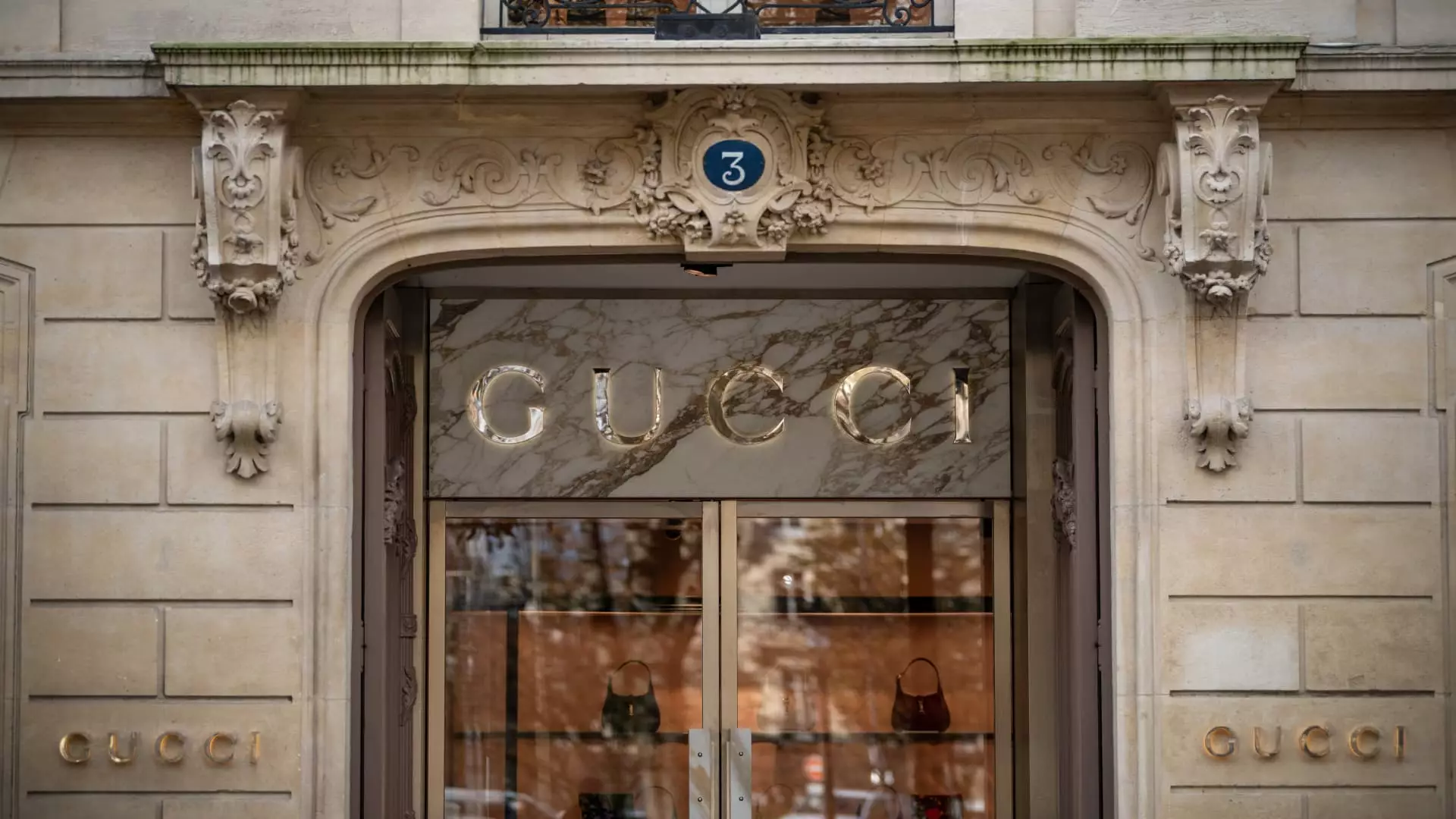In a shocking update from the luxury sector, Kering has reported a staggering 14% drop in its first-quarter revenues, coming in at just 3.9 billion euros. This figure falls disappointingly short of the 4.01 billion euros anticipated by analysts at LSEG. With Gucci, one of the company’s flagship brands, witnessing a catastrophic 25% decline in its sales, the future looks uncertain not only for Kering but also for the broader luxury market. The underperformance of such a prestigious brand reflects a worrying trend where high-valued luxury items are becoming less alluring to discerning customers.
The cautionary shift in consumer spending, particularly in premium segments like those dominated by Kering, has raised alarms. Once considered impenetrable to economic fluctuations, luxury brands are now feeling the heat. The dismal performance is not merely a result of transient market whims but rooted deeply in escalating inflation and hesitancy among consumers. For Kering, this is not just an isolated occurrence; it parallels a broader narrative of a luxury industry grappling with a shifting landscape.
Kering vs. Market Forces: A Clash of Expectations
As if the shocking sales report weren’t enough, the drop in Kering’s stock by 4.3% following these revelations sends a clear message: investors are bracing for turbulence. The company’s Chair and CEO, François-Henri Pinault, characterized the early part of the year as “difficult,” pointing to grim macroeconomic headwinds that seem unrelenting. This admission is troubling given that Kering’s strength largely hinges on the allure of its household names, with Gucci accounting for almost half of its sales.
However, even as the company works to firm its footing, the rest of the luxury segment, including competitors like Richemont and LVMH, also showed signs of weakness. The shifting tide in Asia—with a steep 25% decline in group sales—only exacerbates the bleak outlook for Kering. The once-thriving Chinese consumer base has dwindled, with many now prioritizing savings amid rising costs of living. In this light, the luxury sector can no longer rely on its traditional markets; it needs an overhaul.
Leadership Under Fire: Demna Gvasalia’s Controversial Appointment
Adding to the layers of complexity surrounding Kering is the recent announcement of Demna Gvasalia as Gucci’s new artistic director. While this decision is undoubtedly aimed at revitalizing a struggling brand, it hasn’t evaded scrutiny, particularly given the backlash following his controversial work while at Balenciaga. Many investors are understandably reluctant, raising eyebrows at the company’s judgment in its effort to orchestrate a comeback.
The fusion of creativity with commercial viability in the luxury sector has never been a straightforward equation, yet Kering’s approach appears fraught with peril. The decline in sales underlines a critical realization: flashy designs might not be sufficient if they don’t resonate with the marketplace’s evolving sensibilities. As Gucci maneuvers through a rebranding strategy, the major question remains: Can Gvasalia break the slump when previous efforts have been met with disdain?
A Warning from Experts: The Fragility of Luxury Demand
Market analysts are issuing stark warnings regarding the future of the luxury industry. Adam Cochrane of Deutsche Bank cautions that wavering global stock markets and uncertainties in the economy could dampen consumer confidence significantly, further delaying any expected rebound in luxury demand. This pessimism paints a worrisome picture for brands like Kering, which have been reportedly less insulated from economic pressures than previously assumed.
In light of tariff introductions and economic unease, Kering is in a precarious position, struggling to maintain its market relevance while fending off declining sales figures. The competition with LVMH is telling; Kering’s sales slump reveals a unique predicament where increasing prices due to tariffs might not be an acceptable strategy, unlike their more stable rival. While LVMH positions itself robustly against such obstacles, Kering is left grappling with its falling status and a declining consumer base that is unwilling to spend freely.
Overall, the news from Kering serves as a wake-up call for a luxury market undergoing transformation. A brand’s heritage and reputation alone are no longer enough to captivate consumers in an increasingly competitive and economically fragile environment. The stakes have never been higher, and Kering’s ability to pivot and respond effectively could well determine its survival in a relentless market.

